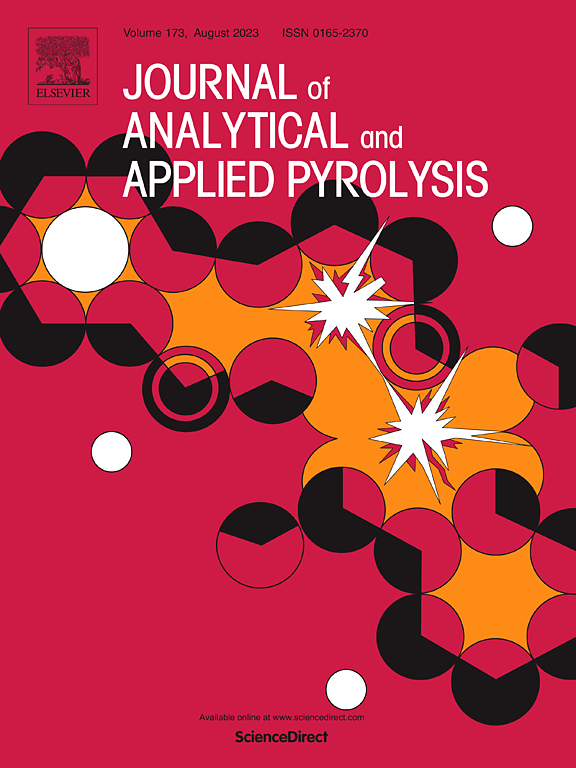Kinetics, product distribution and synergistic effects on the co-pyrolysis processes for epoxy resins and balsa wood
IF 5.8
2区 化学
Q1 CHEMISTRY, ANALYTICAL
引用次数: 0
Abstract
This work systematically examined the co-pyrolysis behaviors and product distribution of epoxy resins (EP) and balsa wood (BW) from waste wind turbine blades (WWTBs) using thermogravimetric analysis coupled with Fourier transform infrared spectroscopy and mass spectrometry (TG-FTIR-MS) and pyrolysis gas chromatography/mass spectrometry (Py-GC/MS). Kissinger-Akahira-Sunose (KAS) model, Flynn-Wall-Ozawa (FWO) model and distributed activation energy models (DAEM) were applied to analyze the co-pyrolysis kinetics. Thermogravimetric results showed that synergistic effects promoted thermal decomposition of the blends. The presence of EP dramatically reduced the energy barrier for BW decomposition. Three-Gaussian-DAEM (TG-DAEM) provided better fitting accuracy for co-pyrolysis behaviors. Product analysis indicated that co-pyrolysis promoted the generation of phenols and hexatomic ring compounds, likely due to Diels-Alder reactions, enhancing efficiency at early and middle stages of co-pyrolysis. However, macromolecules generated required additional energy for cracking into lighter products. Both synergistic and antagonistic effects were observed during co-pyrolysis. These findings are significant for WWTBs composites recovery and recycling.
求助全文
约1分钟内获得全文
求助全文
来源期刊
CiteScore
9.10
自引率
11.70%
发文量
340
审稿时长
44 days
期刊介绍:
The Journal of Analytical and Applied Pyrolysis (JAAP) is devoted to the publication of papers dealing with innovative applications of pyrolysis processes, the characterization of products related to pyrolysis reactions, and investigations of reaction mechanism. To be considered by JAAP, a manuscript should present significant progress in these topics. The novelty must be satisfactorily argued in the cover letter. A manuscript with a cover letter to the editor not addressing the novelty is likely to be rejected without review.

 求助内容:
求助内容: 应助结果提醒方式:
应助结果提醒方式:


